Products - Cast Iron & Timber Benches
Cast Iron & Timber Benches
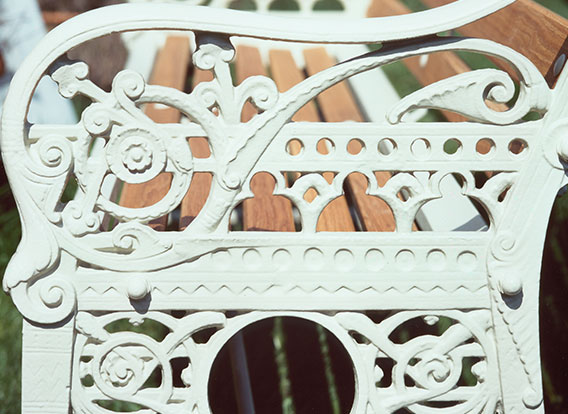
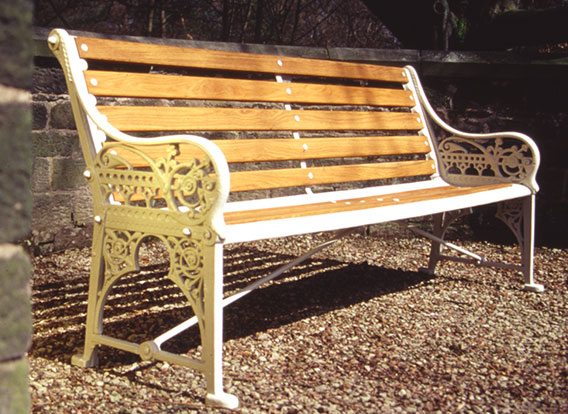
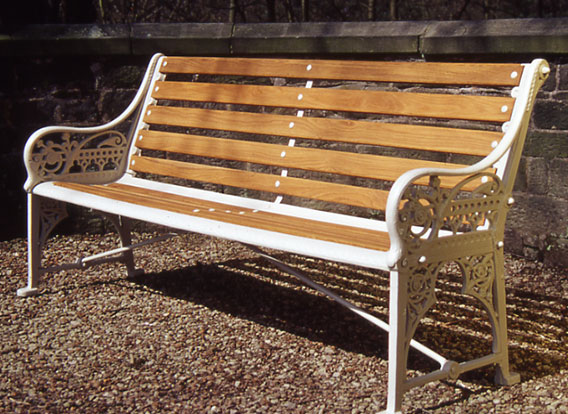
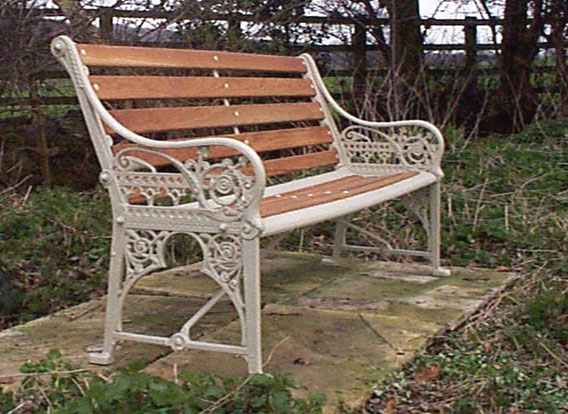
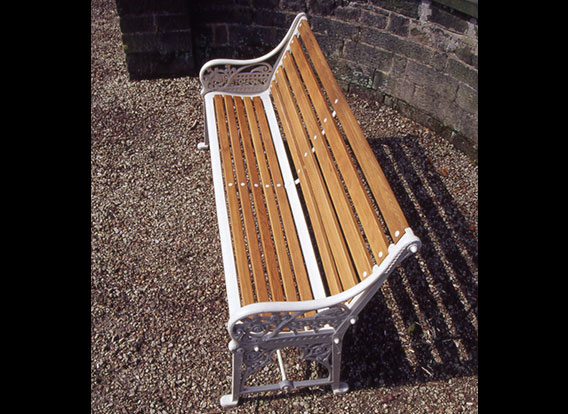
Coalbrookdale Medieval
A particularly rare design, based on a 19th Century Coalbrookdale Medieval pattern. The cast iron ends include intricate, yet well defined decoration and are attributed to the innovative and much sought after designer Christopher Dresser. His notable style involved the combination of stylised natural forms with geometric influenced elements and borders.
Constructed from cast iron and timber, the seat features cast iron seat and back frame into which the timbers are hand sprung.
Dimensions
Height: 875mm
Width: 650mm
Base: 550mm
Floor to Armrest: 610mm
Floor to Seating: 420mm
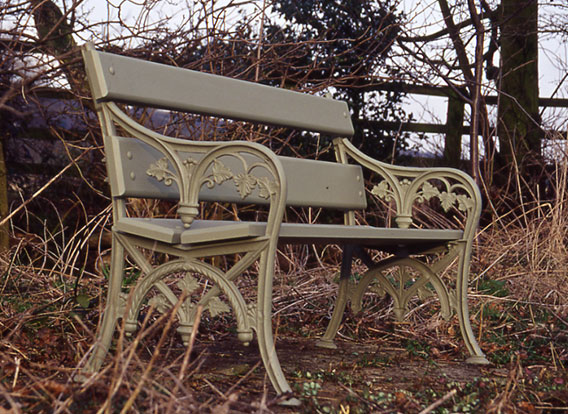
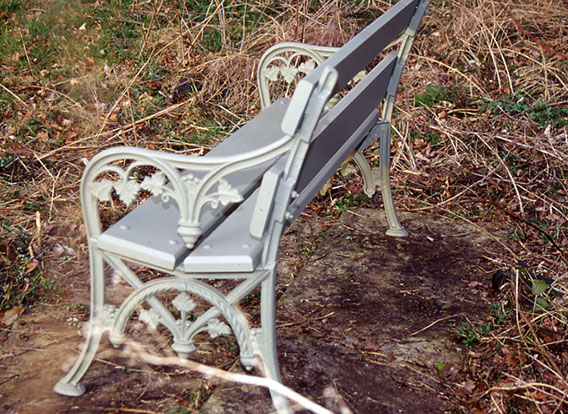
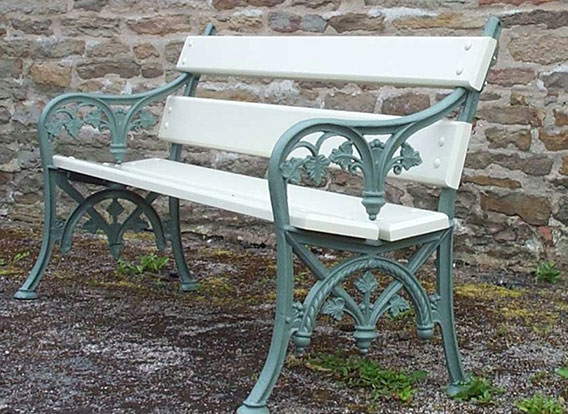
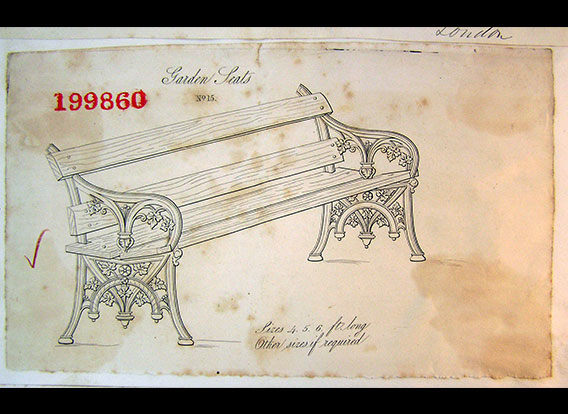
Crookdale
This classic park bench can be seen in public spaces throughout the country. Originally produced by the Carron Company, Lost Art Limited offer a faithful reproduction in high specification materials and finish.
The bench can be produced as a single, two or three-seat version.
Dimensions
Height: 820mm
Width: 620mm
Base: 590mm
Floor to Armrest: 590mm
Floor to Seating: 380mm
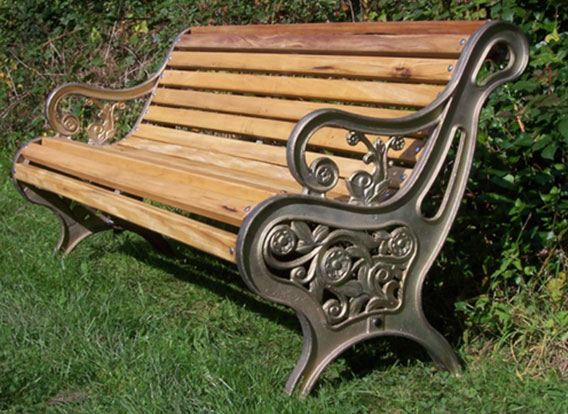
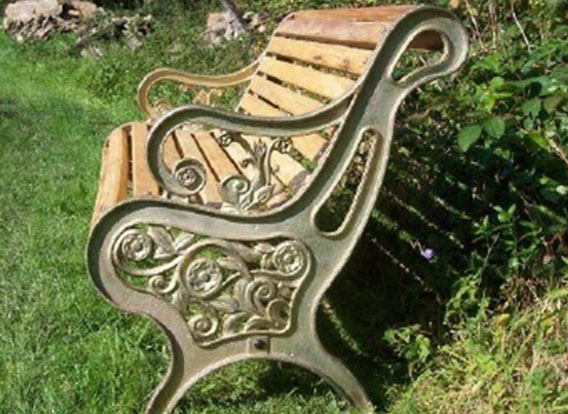
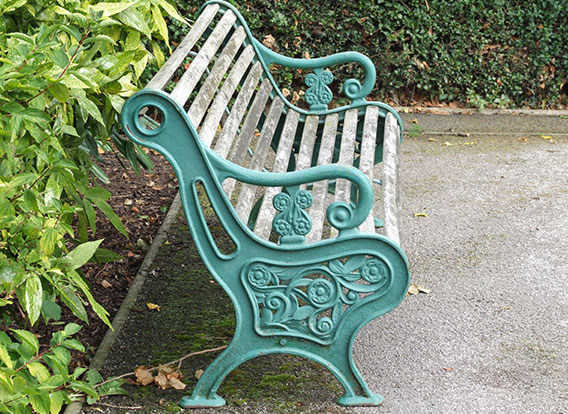
Grange
The Grange Bench offers a combination of ornamentation and solidity that make it an excellent choice for installation in high use public areas.
As can be seen in the images, the cast iron ends contain foliate and floral decoration within a sturdy frame and provide support for substantial timber slats.
Examples of this bench were originally installed in public parks throughout the UK. Lost Art Limited have previously been commissioned to provide reproduction examples of these for restoration projects.
Dimensions
Height: 820mm
Width: 650mm
Base: 520mm
Floor to Armrest: 620mm
Floor to Seating: 420mm
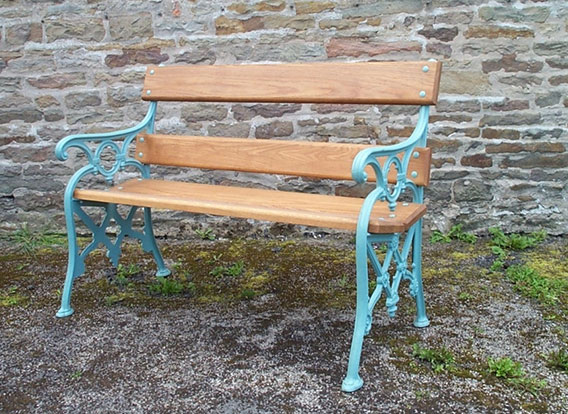
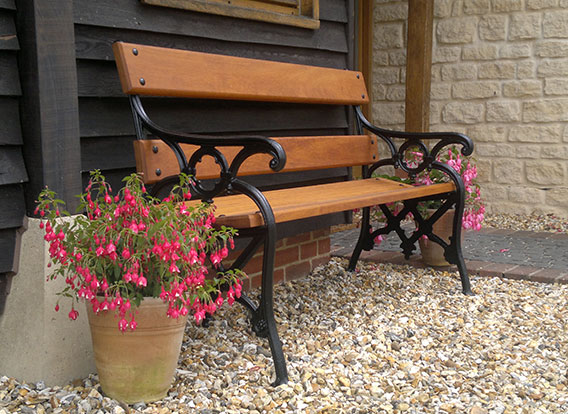
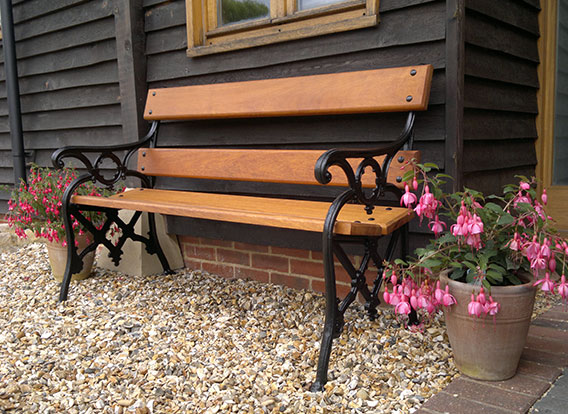
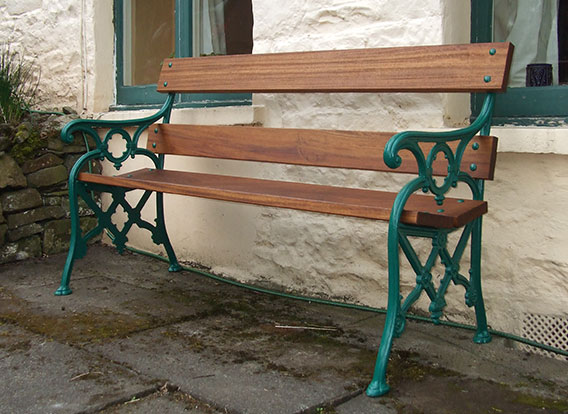
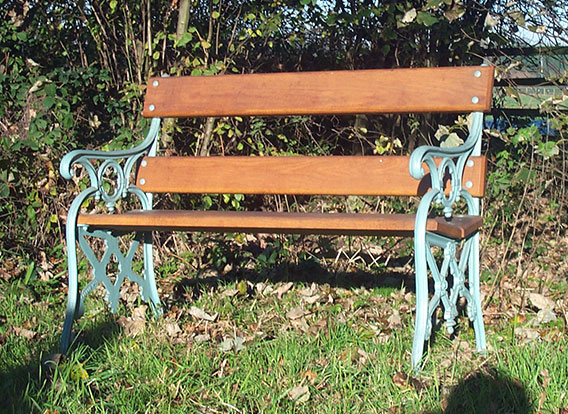
Carron No.11
A simple, elegant garden bench from the famous Carron Company. Although garden furnishings were a small element of the giant company’s range, which concentrated more on munitions and domestic implements, their bench designs were both classic and enduring.
As this bench design is not handed (Ie the left and right supports are the same) then this design can be produced in virtually any length required.
The slats are substantial and provide a comfortable seating profile.
Dimensions
Height: 870mm
Width: 660mm
Base: 660mm
Floor to Armrest: 630mm
Floor to Seating: 410mm
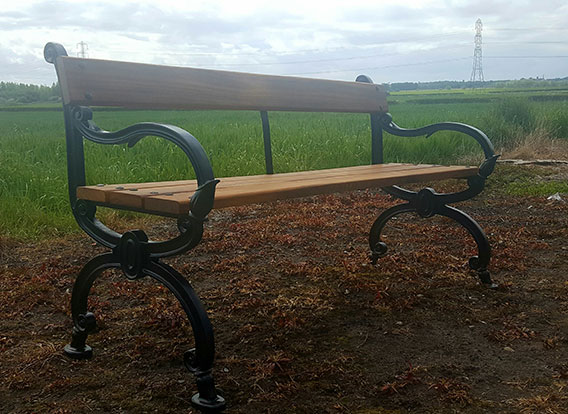
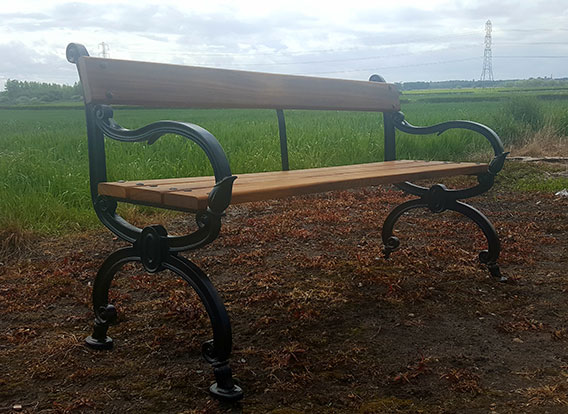
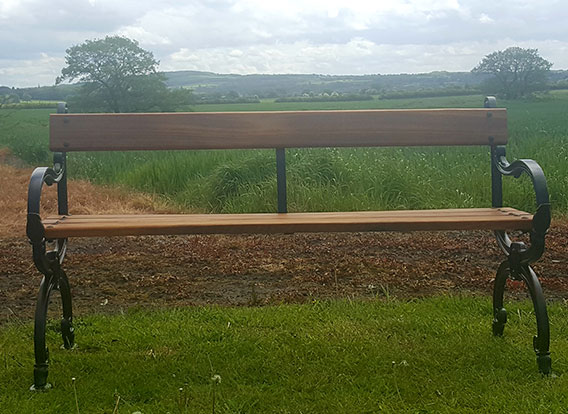
Teignbridge
A classic design from the late Victorian period, showing flowing geometric influenced forms with hints of natural shapes which shows progression through from the highly naturalistic period of early cast iron bench design, through the innovation of designers such as Christopher Dresser, who married plant forms and decorative shapes, leading to the more abstract designs of the later period.
This is also a bench with a story! Lost Art Limited were approached by Teignbridge Council to ask if we could supply benches to match the originals shown on a postcard set in a garden overlooking the town harbour. From our research, we were able to find the registration design illustration of the original bench, which appears to have originated from the Burnt Tree Works of Thomas Marsh and Company of Dudley. Working with our clients, we produced a casting pattern based on the illustration and matching more modern requirements and tastes. The benches have become a popular memorial item in the town and are now offered to all who appreciate their beauty.
Dimensions
Height: 840mm
Width: 660mm
Base: 610mm
Floor to Armrest: 640mm
Floor to Seating: 440mm
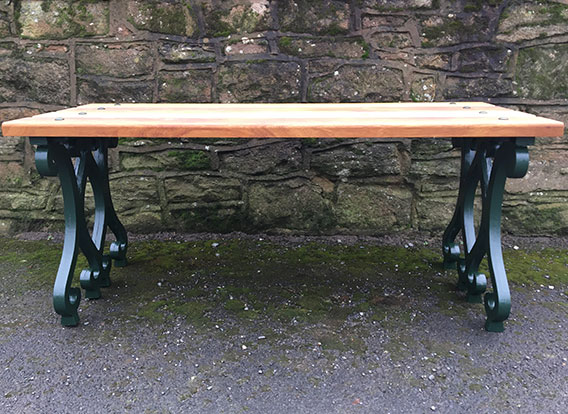
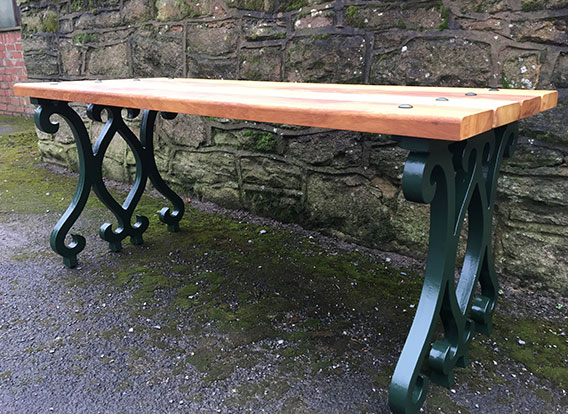
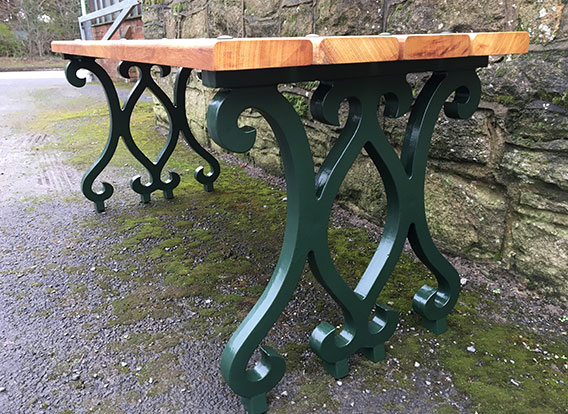
Grecian Timber Top
Reproduced from Victorian originals for a major restoration project, this classic flat topped bench is now available with either the decorative pierced cast-iron top or the timber slats.
The supports are a robust section of cast iron with a stylised design that is derived from Classical Greek influences (hence the name!). The bench top is offered as a single cast-iron section or in a substantial profiled hardwood according to client preferences.
If timber slats are selected, then the bench can be made to virtually any length, using the required number of cast iron supports.
Dimensions
Height: 493mm
Width: 470mm
Base: 470mm
Floor to Seating: 465mm
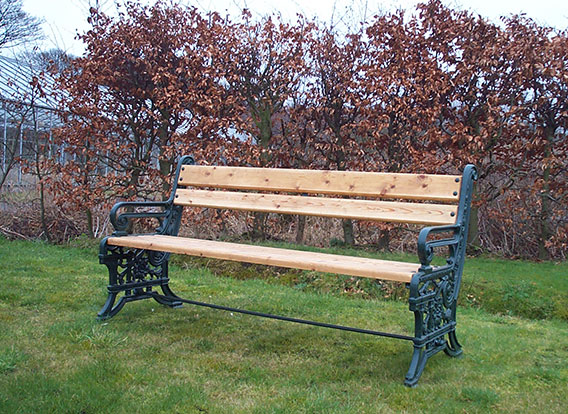
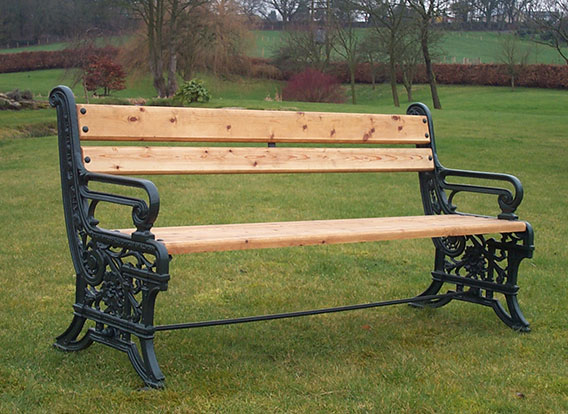
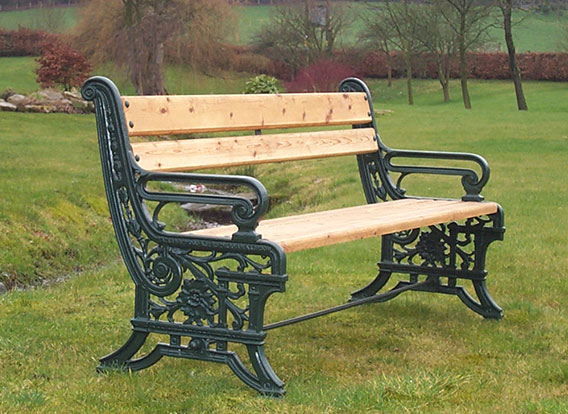
Yates & Haywood
Attractive, interesting and unusual, yet also substantial and robust. Dating from the final quarter of the 19th Century, the original benches were produced at the Effingham Works in Rotherham, Yorkshire.
In keeping with what was the house style of the foundry, the benches combine stylised natural shapes framed within geometric borders that, as with many of the designs of the time, are heavily influenced by the innovative work of Christopher Dresser and the Coalbrookdale Company.
The Yates and Haywood Company were largely focussed on domestic products rather than the more decorative aspects of cast-iron production. As they came late to this aspect of the market and production lasted for quite limited period, their bench designs are both of their time and quite distinctive.
For clients who wish to have something a little less ordinary and of great aesthetic and historical interest and value. Perhaps the perfect place to rest on the road less travelled?
Dimensions
Height: 820mm
Width: 650mm
Base: 600mm
Floor to Armrest: 575mm
Floor to Seating: 400mm
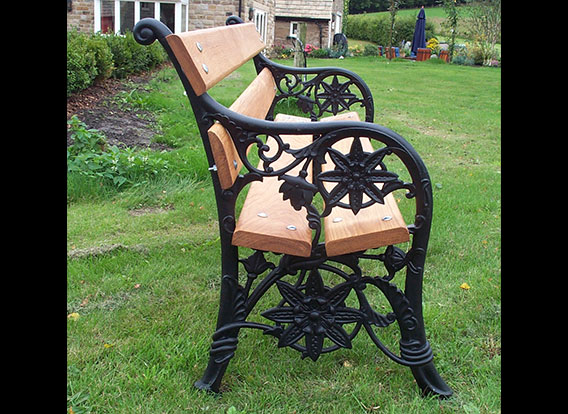
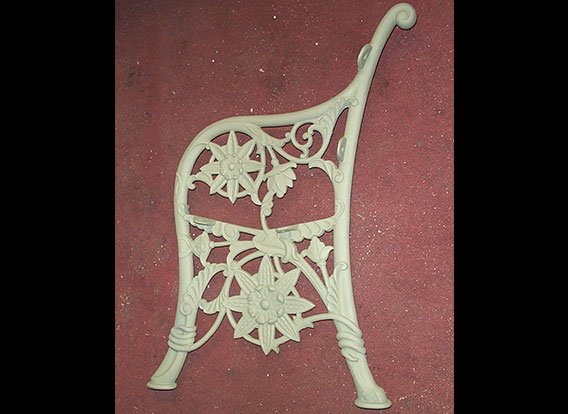
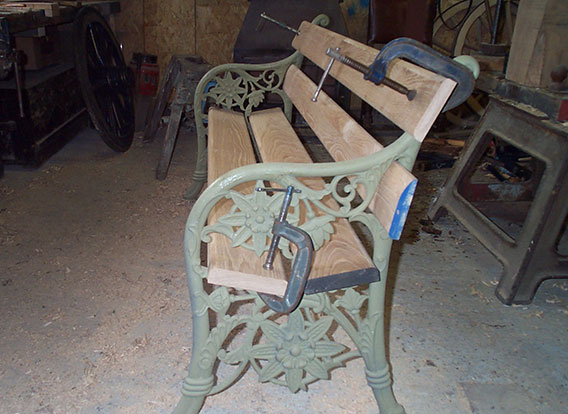
Passion Flower
Beautiful stylised buds, tendrils and the distinctive petals are contained within the flowing curves of the cast iron supports. An exceptional example of the art of the decorative output of the Victorian foundries, from the period where design aesthetics were replacing straightforward representation.
Despite the aesthetic appeal of the castings, the supports are robust and are paired with substantial shaped and chamfered hardwood timbers, offering distinctive and attractive seating suitable for public spaces.
As the castings are not ‘handed’ (i.e. they are the same at both ends of the bench, rather than being specifically for the right or left end of the bench) this means that multiple castings can be included in any bench and can therefore made to any length that a client requires.
The accompanying images show both the completed bench plus the same bench during the process of production, using traditional materials and techniques.
Dimensions
Height: 775mm
Width: 620mm
Base: 570mm
Floor to Armrest: 600mm
Floor to Seating: 395mm
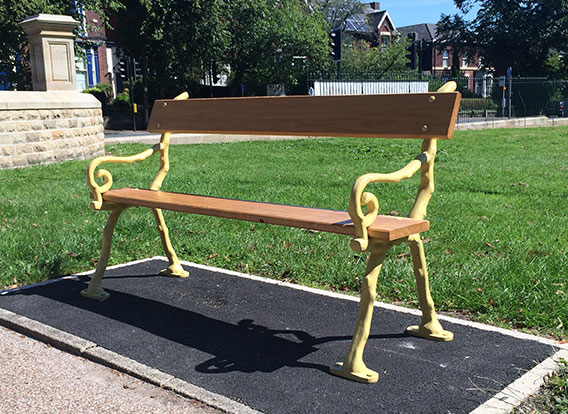
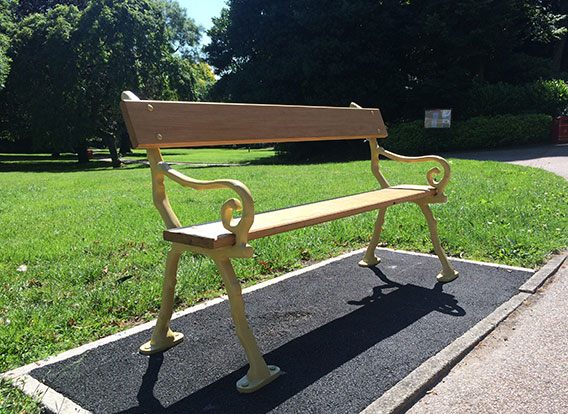
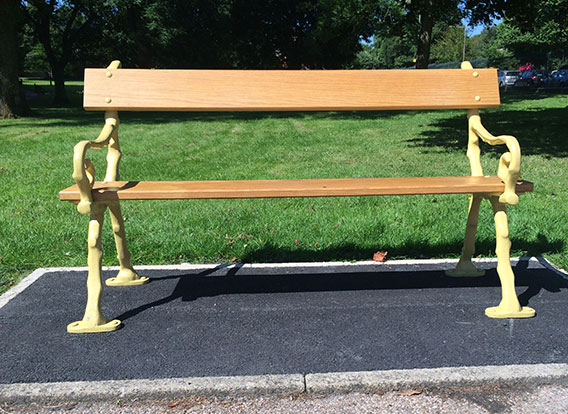
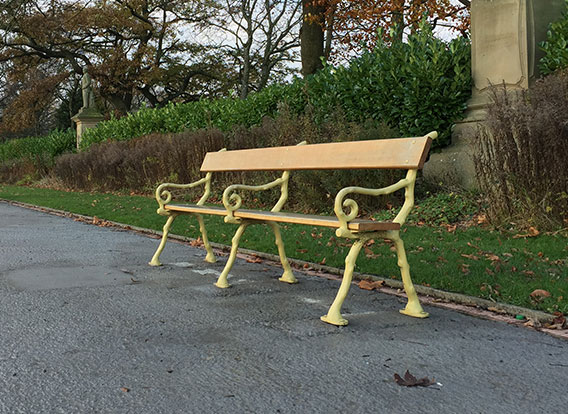
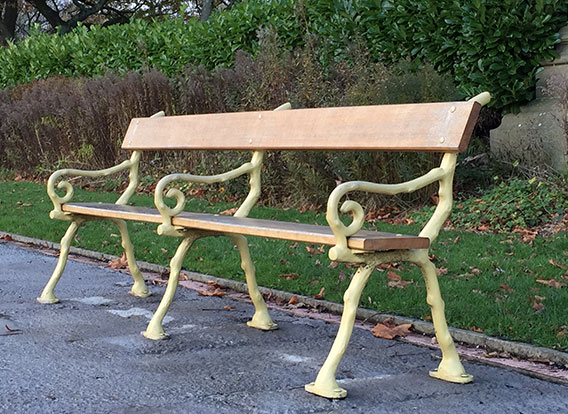
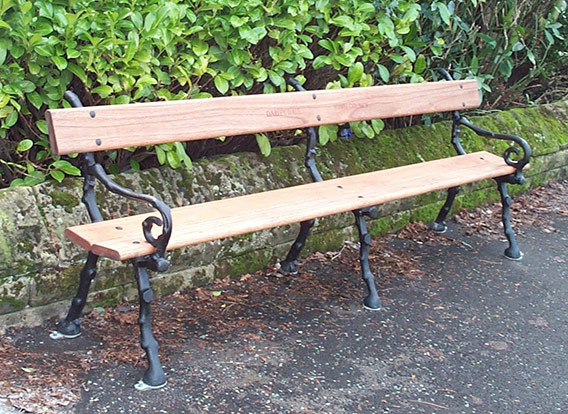
Rustic
This naturalistic style of bench has great historical significance as well as aesthetic appeal. As foundries began to produce cast iron items that were both functional and decorative, a common theme was to feature naturalistic forms cast in iron as this was taken to symbolise man’s triumph over the natural world.
At the same time as the technological developments were taking place, social change was also in progress, with the provision by philanthropists and more enlightened employers of open spaces with the towns, where the inhabitants could spend time following healthy pursuits in what passed for their leisure time.
With the development of the public parks came the requirement for street furniture and so cast iron benches were installed in the green spaces. The earliest mass produced benches therefore were of the naturalistic style of which this rustic bench is an excellent example.
Many different foundries produced benches in this style and Lost Art Limited have supplied several major prestige restoration projects with this bench in order to reintroduce seating that matches the original provision.
Many different foundries produced benches in this style and Lost Art Limited have supplied several major prestige restoration projects with this bench in order to reintroduce seating that matches the original provision.
Dimensions
Height: 860mm
Width: 600mm
Base: 500mm
Floor to Armrest: 590mm
Floor to Seating: 390mm
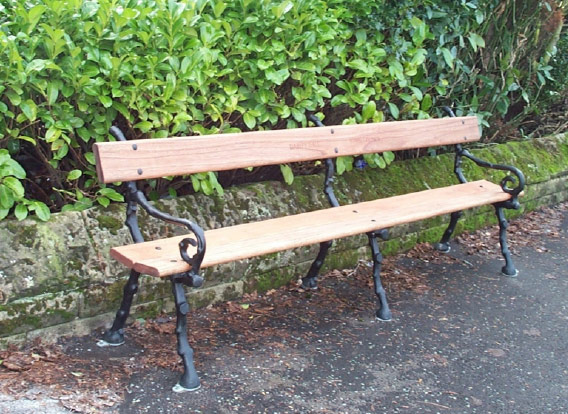
The Darley Dale Rustic
Rustic style benches were particularly popular in the earlier part of the Victoria era, as foundries produced benches that recreated naturalistic forms in the newly mastered processes of casting iron.
As the century progressed, the forms that these designs inspired by nature became more stylised. Many foundries produced their own versions of the rustic style benches, and while they bear similarities, there are also differences.
Our Darley Dale Rustic differs mainly from our simple RUSTIC bench in that the sating involves a toral of 3 slats, rather than the two of the basic rustic design.
This particular style of bench was installed at the Whitworth Institute in Darley Dale, Derbyshire. The cast ends are not specifically handed to the left or right and so the benches can be as long as any customer would like to specify, using additional castings as central supports. Additionally, the castings can be produced with or without the arms.
ese castings can also be included in the design of a tree seat, or a curved bench where bespoke designs may be required.
For further rustic design benches, please view our RUSTIC and WHITWORTH benches.
Product Information